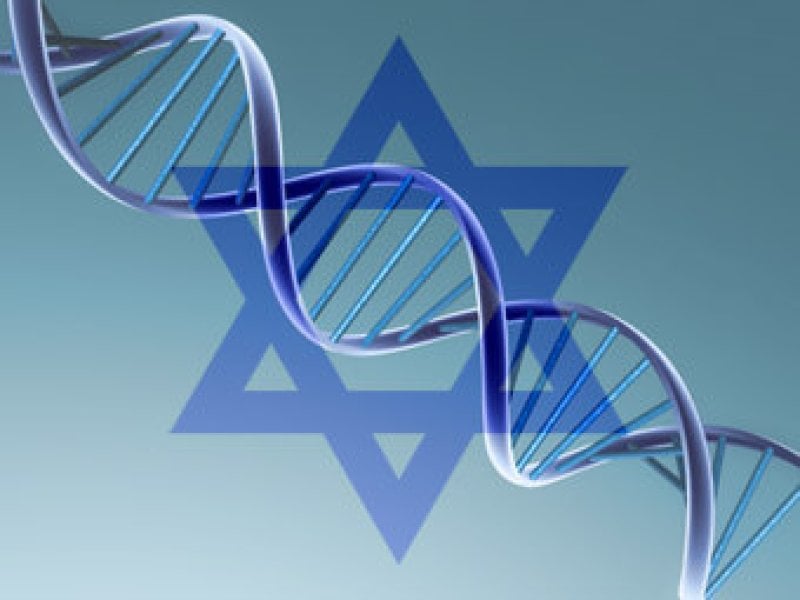Are most modern Jews primarily of European or Middle and Near Eastern ancestry? That controversial subject—at the heart of the debate over the historical ‘right of return’ claimed by many religious Jews—is back in the headlines with the release of a massive new study published in Nature Communications challenging some established views of the origins of European Jewry.
The total Ashkenazi population is estimated at around 8 million people. The estimated world Jewish population is about 13 million.
Before the advent of advanced DNA research, it had been thought by some historians that European Jewry traced to the largely pagan population of ancient Khazaria in the Caucuses, whose leadership was believed to have converted to Judaism beginning around 700 AD. But that theory—known as the Khazarian hypothesis—has been largely discredited by DNA research. One geneticist, Eran Elhaik, has recently attempted to revive the theory, but his research has been sharply challenged.
A groundbreaking paper published in 2000 by Harry Ostrer, a professor of genetics at the Albert Einstein College of Medicine, and University of Arizona geneticist Michael Hammer showed that most modern Jews are descended on their male side from a core population of approximately 20,000 Jews who migrated from Italy over the first millennium and eventually settled in Eastern Europe.
“All European [Ashkenazi] Jews seem connected on the order of fourth or fifth cousins,” Ostrer has said.
Known as the so-called “Rhineland hypothesis,” the consensus research holds that most Ashkenazi Jews, as well as many Jews tracing their lineage to Italy, North Africa, Iraq, Iran, Kurdish regions and Yemen, share common paternal haplotypes also found among many Arabs from Palestine, Lebanon and Syria. Only a small percentage of the Y-DNA of Ashkenazi Jews—less than 25 percent—originated outside of the Near East, presumably as converts.
This historical and genetic mosaic has provided support for the controversial concept of a “Jewish people.” The Law of Return, the Israeli law that established the right of Jews around the world to settle in Israel and which remains in force today, was a central tenet of Zionism. It is invoked by some religious Jews to support territorial claims (even though, based on this research, many Arabs, including Palestinians, where therefore also have a genetic ‘right of return’).
But what about the female lineage? That history is more obscure and contentiously debated. Duke University’s David Goldstein and Mark Thomas of the Center for Genetic Anthropology in London reported in 2002 that much of the mitochondrial DNA of women in Jewish communities around the world that they examined did not seem to be of Middle or Near Eastern origin, and indeed each community had its own genetic pattern. This suggested that migrating Jewish men might have taken on local wives, who converted to Judaism. The estimates of the percentage of Ashkenazi women of European image was probably more than 50 percent, they estimated, but the data was too murky to come up with a firm estimate.
But a subsequent and more extensive study in 2006 by a team based at Technion and Rambam Medical Center in Haifa suggested that Ashkenazi women—40 percent or more—may indeed have had ancient Near and Middle Eastern roots, and may have accompanied their husbands as part of families migrating together.
The new study published in Nature Communications aligns itself more closely with the 2002 hypothesis, although there are differences. Professor Martin Richards, who heads the University of Huddersfield’s Archaeogenetics Research Group (and who participated in the 2002 study), and colleagues sequenced 74 mitochondrial genomes and analyzed more than 3,500 mitochondrial genomes – far more data than the 2006 survey, which reviewed only a short length of the mitochondrial DNA, containing just 1,000 or so of its 16,600 DNA units, in all their subjects.
Richards and his team claim that maternal lineages did not originate in the Near or Middle East or the Khazarian Caucasus but rather, for the most part, within Mediterranean Europe. Another twist in the findings: Jewish women may have been assimilated in Europe as far back as 2,000 years ago—earlier than most other studies have projected. The researchers believe the DNA could trace back to the early Roman Empire, when as much as 10 percent of the population practiced Judaism, many of them converts. Overall, they claim, at least 80 percent of Ashkenazi maternal ancestry comes from women indigenous to Europe while 8 percent originated in the Near East, with the rest uncertain.
According to Nicholas Wade of the New York Times, Doron Behar, one of the key authors of the 2006 analysis, said he disagreed with the conclusions, but has provided no detailed critique as yet.
Wade also talked to David Goldstein, who said he believed the estimate that 80 percent of Ashkenazi Jewry originated in Europe was too high considering the unpredictability of mitochondrial DNA data.
The new research underscores an emerging consensus that wandering Jewish men, from the Near East, established a mosaic of small Jewish communities—first in Italy and then scattered throughout Europe, often taking on local gentile wives and raising their children as Jews.
Jon Entine, executive director of the Genetic Literacy Project, is a senior fellow at the Center for Health & Risk Communication and STATS (Statistical Assessment Service) at George Mason University.
Additional Resource:
Abraham’s Children: Race, Identity and the DNA of the Chosen People, Jon Entine































